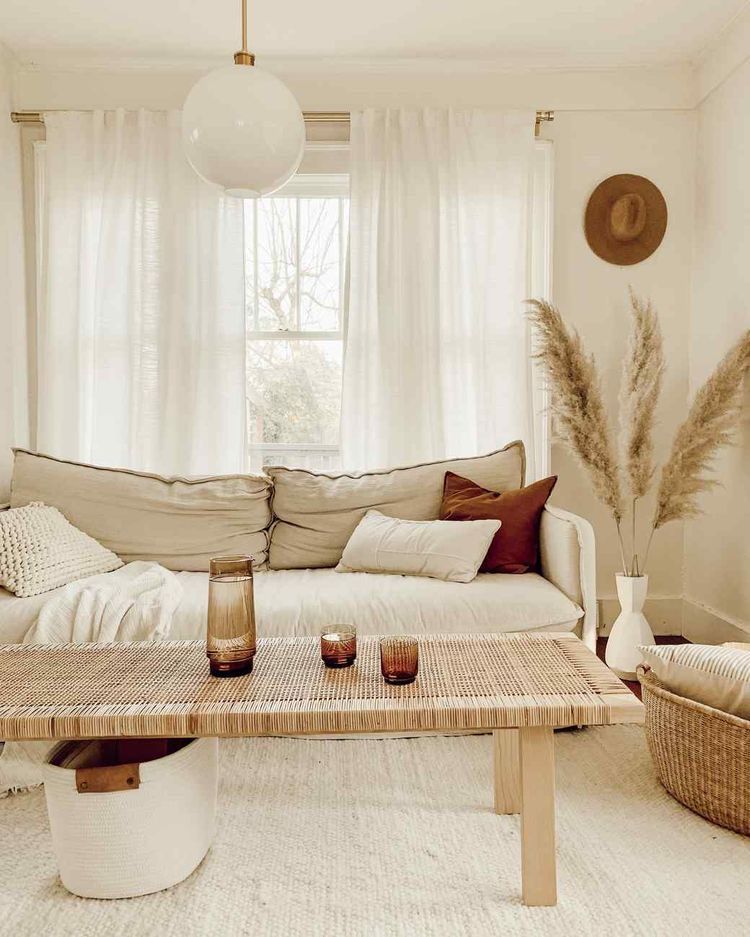Introduction: The Rise of Warm Minimalism
A quiet revolution has unfolded in interior design. Minimalism, once synonymous with starkness and restraint, is now finding its softer side. Warm minimalism blends simplicity with human warmth, inviting inhabitants into spaces that are uncluttered yet deeply comforting.

Defining Warm Minimalism in Modern Interiors
At its core, warm minimalism balances function and feeling. It retains the essence of minimalism—clarity, order, and restraint—yet introduces warmth through textures, hues, and fluid shapes. This aesthetic moves beyond sterile uniformity to create rooms that soothe, nurture, and breathe.
Why Organic Shapes Create Emotional Comfort
Straight lines impose order, but curves invite ease. Organic shapes mimic forms found in nature, echoing rivers, stones, and gentle landscapes. These biomorphic contours foster emotional calm, creating interiors that feel less rigid and more in tune with the body’s natural rhythm.
The Shift from Stark Minimalism to Inviting Spaces
Cold minimalism once relied on monochrome palettes, sharp angles, and industrial austerity. The shift toward cozy simplicity reflects changing lifestyles—where homes are sanctuaries rather than galleries. People crave interiors that allow them to exhale, spaces that look curated yet feel lived in.
Color Palettes: Neutrals Infused with Warmth
Earthy tones and muted hues such as ochre, clay, taupe, and sand dominate warm minimalism. These palettes ground interiors, evoking soil, stone, and sky.
Subtle contrasts that soften—a hint of caramel against cream, or deep olive beside beige—prevent monotony and lend depth to simple schemes.
Furniture Forms: Embracing Curves and Flow
Rounded seating and tables introduce comfort without clutter. Sofas with softly sloped arms or circular coffee tables add a sense of continuity.
Sculptural silhouettes transform furniture into art. Chairs with pebble-like forms or organically carved headboards embody functional elegance while harmonizing with the ethos of simplicity.
Textures that Humanize Minimalism
Natural fabrics and tactile finishes like linen, wool, and untreated wood anchor spaces in authenticity. They invite touch, reminding us that beauty is not only visual but also sensory.
Imperfect materials with character—handmade ceramics, raw stone, or weathered finishes—add individuality and soul to otherwise pared-back environments.
Lighting as a Softening Element
Warm-toned illumination changes everything. Ambient glows from layered lighting schemes nurture intimacy and calm.
Organic-shaped lamps and fixtures echo the softness of curves, whether through pendant globes, sculpted clay bases, or diffused paper lanterns that scatter light gently.
Decor Accents that Anchor the Look
Ceramics, stone, and handmade pieces act as grounding elements, bringing honesty and tactile presence.
Art inspired by fluid lines reinforces the organic theme—wall hangings, abstract sketches, or sculptural objects that echo the movements of wind and water.
Spatial Planning for Serenity
Open layouts with subtle zoning encourage freedom of movement while maintaining coherence. Rugs, lighting, and furniture placement define zones without fragmenting space.
Breathing space between objects ensures minimalism feels intentional rather than sparse, giving every element room to be appreciated.
Blending Nature into Design
Plants as sculptural companions blur boundaries between indoors and outdoors. From trailing greenery to single statement leaves, foliage doubles as living decor.
Natural wood and stone surfaces—whether a polished oak floor or a honed limestone countertop—bring elemental grounding into modern interiors.
The Psychological Benefits of Cozy Simplicity
Warm minimalism does more than please the eye. It calms overstimulated minds, encourages mindfulness, and reduces visual noise. By surrounding ourselves with organic shapes and muted tones, we create environments that promote rest, clarity, and belonging.
Practical Tips to Introduce Warm Minimalism at Home
Start with a neutral foundation, then layer textures for depth. Choose furniture with softened edges, and resist overfilling rooms. Replace harsh lighting with warm, diffused alternatives. Incorporate natural materials wherever possible, and let empty space be part of the design narrative.
Conclusion: The Future of Minimalist Comfort
Warm minimalism is not a fleeting aesthetic; it reflects a deeper cultural yearning for balance. In a fast-paced world, interiors that combine simplicity with warmth are timeless. Organic shapes, tactile surfaces, and gentle palettes transform spaces into sanctuaries—calm, inviting, and profoundly human.

